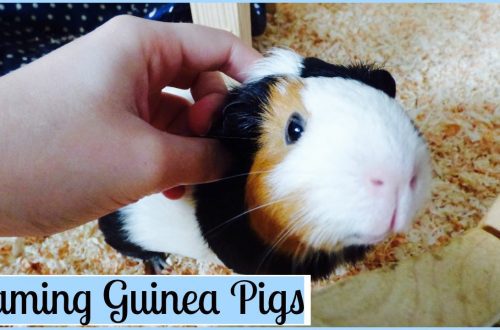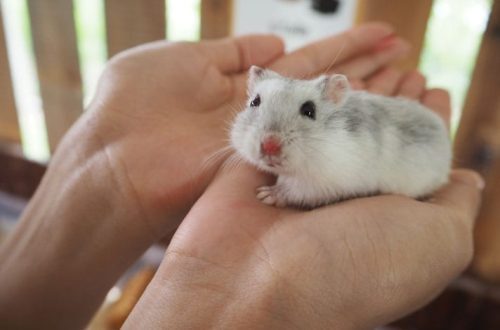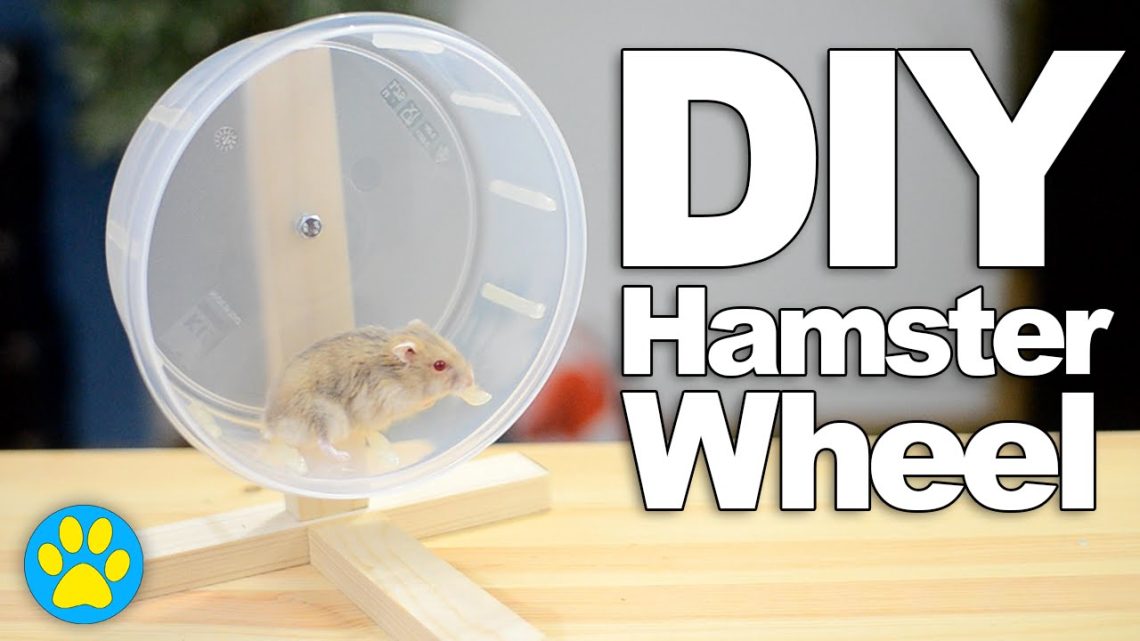
How to make a hamster wheel at home
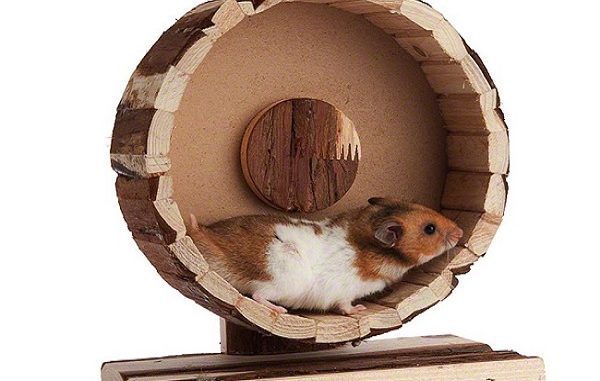
Hamsters, leading a very mobile lifestyle and mainly at night, are sure to cause trouble for the owners, making it difficult to sleep soundly at night. If you are faced with such problems, then it’s time to give your pet a silent trainer that will help him throw out energy and not disturb your sleep. Follow this simple tutorial on how to make your own hamster wheel at home so your pet can have a quiet but active nightlife.
Contents
- What is a hamster wheel for?
- hard drive running wheel
- Video: how to make a wooden hamster wheel with your own hands
- Video: how to make a DIY hamster wheel from a plastic can
- Video: how to make a DIY hamster wheel out of a cake box
- Video: how to make a cardboard hamster wheel with your own hands
- Running wheel with generator
- Teaching a rodent to use a wheel
What is a hamster wheel for?
Practice shows that the vast majority of hamsters are active at night, apart from rare exceptions that prefer a daytime lifestyle. The silent running wheel will be an excellent addition to the cage of a rodent, providing it with the ability to run as long as the steppe nature of the animal, which is accustomed to running more than ten kilometers a night, getting food for itself, requires. At the same time, the constant activity of the pet will become invisible to the owners, since a hand-made wheel will be a full-fledged analogue of a store-bought one that does not create extraneous sounds.
Before you start designing a hamster simulator, you need to get acquainted with the basic requirements for running wheels, which we will discuss below. An important point will be the preparation of the rodent for a new object in the cage, since the animal will first have to be taught how to use the wheel, and then taught. So, first things first.
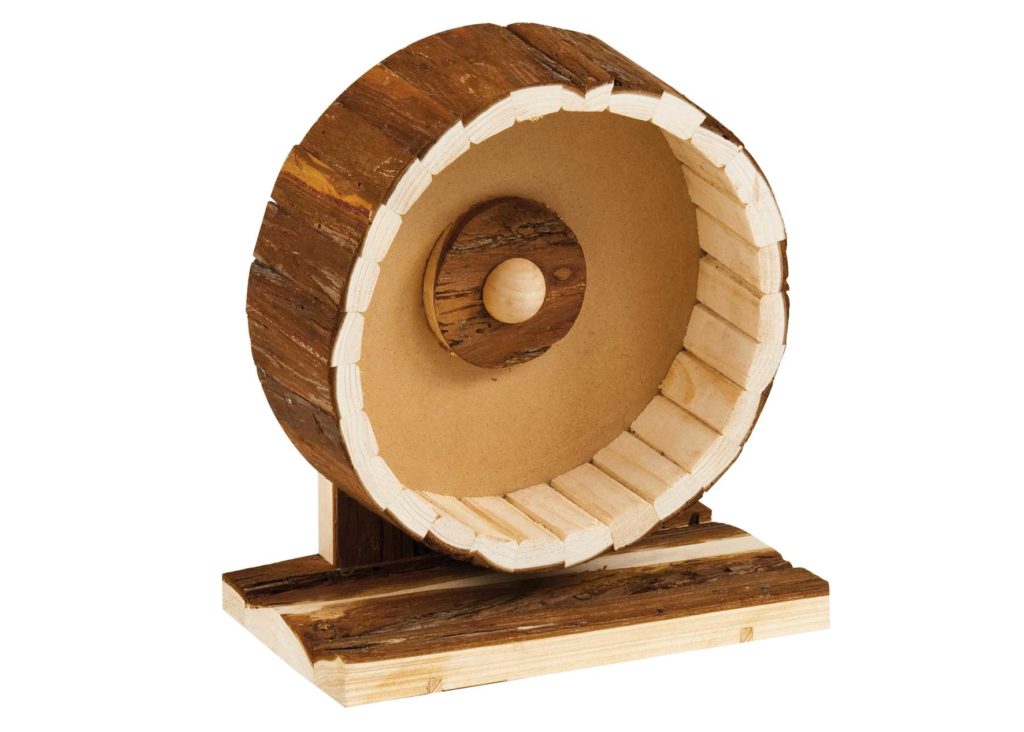
For the convenience of the hamster, the surface of the future wheel should be flat and contain small serifs so that the rodent can stay on it and move without slipping. An acceptable option would be a ribbed surface made of corrugated cardboard. If slippery metal is used as the main material for the simulator, it must be wrapped with a soft cotton cloth, fixing the skin with glue.
A quality wheel should look like this:
- silent in work;
- suitable diameter;
- with serifs on the inside;
- easy to rotate;
- do not create vibration;
- firmly fixed.
The diameter of the wheel must be selected according to the size of your pet. Do not forget that for large breeds, the dimensions should be at least 18 cm, and for dwarf ones – at least 12 cm. As a base, you can use a large tin can or a thick piece of cardboard. Pay attention to the surface of the product: ideally, there should be no dyes on it at all. If the running wheel is planned to be made of cardboard, then a regular CD can serve as the basis, which must be glued to the bottom of the container. It is advisable to take a transparent disk for this purpose.
Basic requirements for the wheel base:
- When choosing a metal circle as a frame, consider the presence of smooth edges of the product to protect the hamster and yourself from possible cuts. It is better to cut a tin bottle or other container with special scissors designed for metal;
- the rotational element of the wheel can be made from a spindle taken from a hard disk, or you can use the engine of an old disk drive. It must be tightly attached to the bottom of the container with hot glue;
- if thin tin is taken as the basis, prepare an additional bottom from plastic or wooden strips fixed transversely to the surface. Make sure that the spindle is attached exactly in the center of the product, which will ensure its silent operation. Even a millimeter error will lead to the opposite result.
At the end of the topic about a quality home wheel, it is important to say about the mounts. When making a simulator out of metal, you only need to glue the spindle and fix the wheel on the cage, so there is no need for separate fasteners. But in the case of a cardboard product, fixing the walls along the bottom will be required. For this purpose, it is necessary to make small holes around the perimeter of the bottom of the workpiece, into which wall protrusions will then be inserted. You can attach the wheel to the walls of the cage with wire or plastic ties. To do this, use the free space in the spindle, attaching a wire to them and fixing its edges from the outside of the cage.
hard drive running wheel
A pet rodent will certainly appreciate an item that the owner will try to make comfortable for hamster training, and will devote most of his time to running. To make a simulator with your own hands, you must follow the conditions of the sequence of work. So let’s start crafting:
- We take out the old hard drive, take a screwdriver and remove the cover from it.
- We remove all the bolts that hold the mirror plate.
- We take out the spindle and unscrew the bolts, disconnecting it from the holding frame.
- We cut out the tin container in a circle, having previously calculated the desired diameter.
- We attach cotton fabric (or other material with a porous structure) to the glue on the inside of the product.
- We attach another layer along the entire bottom so that the wheel can become silent.
- Next, we fix the spindle at the bottom.
- It remains to install and fix the finished wheel to the walls of the cage.
Video: how to make a DIY hamster wheel from a hard drive
By the way, in addition to the metal case, you can make a running drum out of plastic items. To do this, stock up with a plastic box from CDs and a curved building dowel with a nail (90 ° bend). From the tools you will need an awl, a jigsaw and a drill. The task conditions are:
- We take out a plastic box, measure a distance of 5 cm from the top.
- We draw a straight line around the entire circumference of the box and, moving along the measured line, we cut it with a jigsaw.
- In the next step, we need a drill with a diameter of 0,6 cm, with which we begin to make holes with a drill.
- Next, with an awl, we make small holes around the entire circumference of the box, not exceeding a diameter of 0,3 cm. We maintain a distance between them of about 5 mm. We make punctures exclusively from the outside of the product.
- At the places of cut, we pass with sandpaper, smoothing out sharp roughness.
- We insert the dowel into the center of the box and fix the wheel on the rodent cage.
Video: how to make a wooden hamster wheel with your own hands
Video: how to make a DIY hamster wheel from a plastic can
Video: how to make a DIY hamster wheel out of a cake box
Video: how to make a cardboard hamster wheel with your own hands
Running wheel with generator
Other owners arm themselves with various wheel-making techniques and come up with a hamster wheel with a bearing, complete with the added bonus of a generator. Making such a wheel is not very difficult if you follow the instructions step by step. So:
- First of all, you need an old CD drive. This device initially has a convenient shape suitable for mounting in a cage and does not require cutting with a jigsaw, achieving the desired dimensions.
- Carefully remove the casing from the drive, then the board and get to the bearing.
- The running wheel, if it has wide spaces between the rods, is covered with a strong transparent film.
- To attach the bearing, you can use a regular disc (preferably transparent or light in color). The disc must be glued to the wheel with superglue.
- Then we glue the bearing to the disk on a small round platform.
- We fix the device to the cage wall with bolts or in any other convenient way. To do this, you can use a metal circle taken from a tin can. The circle is applied to the grate from the outside and secured with small screws or bolts.
There is another easy way to make a homemade rodent wheel, but the condition of existing handicraft skills is important here, since the simulator will have to be cut out of wood materials. We need 2 pieces of plywood, from which we need to cut 2 circles of the same size. Do not forget that we select the diameter of the circle in accordance with the size of the animal. Next, we connect the resulting blanks with each other, weave them with twigs and fix them on the walls of the cage.
Teaching a rodent to use a wheel
If your pet is getting a running wheel for the first time, you need to tell him how to use the trainer correctly.
Put the rodent’s favorite treat inside the work surface, repeating the procedure several times. With each approach, try to put a piece of food on a level higher so that the animal starts spinning the wheel, delving into the principle of its operation. If the treat turned out to be powerless, try blocking the exit from the drum, then the pet will be forced to look for a way to get out and start running around the wheel.
When the rodent gets acquainted with the new object and fully recognizes how to use it, the simulator will become his usual occupation, and exciting running training will become an integral part of every day!
DIY hamster wheel
4.8 (96.67%) 6 votes



